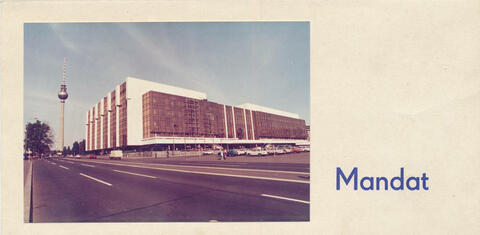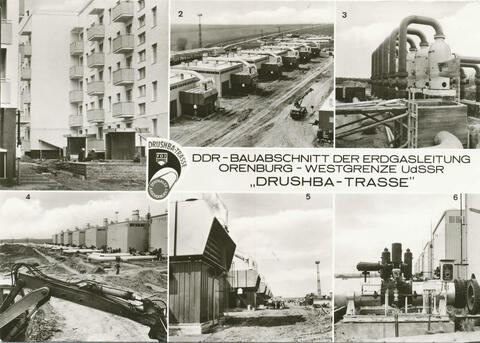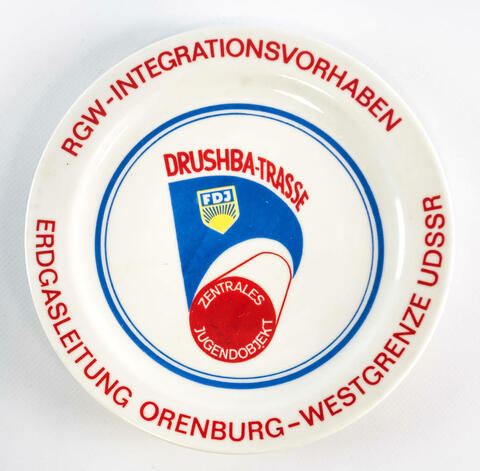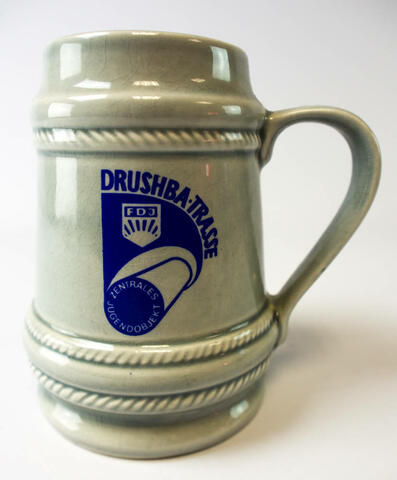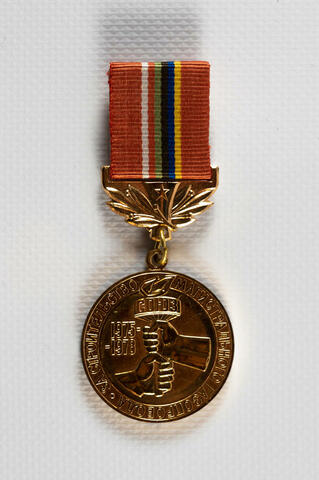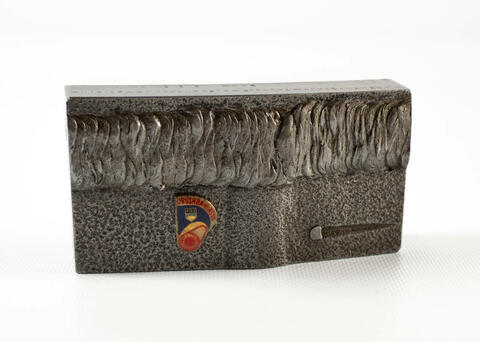GDR History
The Friendship Pipeline
Nearly 50 years ago, one of the largest natural gas deposits in the world was discovered near the Russian city of Orenburg. In order to transport the precious raw material to the CMEA (Council for Mutual Economic Assistance) states for further processing, a 2750-kilometre pipeline had to be built from the Ural Mountains to the Soviet western border. Between 1974 and 1978, the »Soyuz« natural gas pipeline was built by construction brigades from Czechoslovakia, Hungary, Bulgaria, Poland and the GDR. The East German brigades were responsible for the completion of a 550-kilometre section, including necessary infrastructure, which became known as the »Druzhba Line« in the then-Ukrainian Soviet Republic. In return for the construction work, the GDR subsequently received free natural gas.
The »Soyuz« natural gas pipeline and the role of the GDR
Organised as a »central youth project« of the FDJ, about 10,000 volunteers worked on the construction of the pipeline, which became the largest investment project in the GDR. To meet the enormous demand for personnel, the state leadership lured young people with generous allowances of 25 marks per working day, special car allowances and the opportunity to purchase coveted goods through the gift service GENEX. Many volunteers were also attracted by the spirit of adventure and the opportunity to get to know a part of the world that was unknown to them. The conditions on site were very tough, with work being done in shifts six days a week. Working hours of 12 to 14 hours a day were not uncommon either. To keep the »Trassniks«, as the workers involved in the pipeline’s construction were called, happy, concerts of popular rock and pop bands, film evenings or theatre performances were regularly held on their days off. The food was also very generous. As this saying so aptly puts it: »No fight without food, no exercise without food.«
Objects from the collection
There are many objects on this topic in the DDR Museum’s collection. This brochure »Friendship along the Pipeline« from the FDGB (Free German Trade Union Federation) is a perfect example. The brochure was published by the Central Executive Committee of IG Bau-Holz and was intended to address the construction of the oil pipeline from Schwedt to Leuna as part of the socialist friendship between the GDR and the People's Republic of Poland, emphasising the important work of the »Trassniks«. The FDGB was present in every company and institution in the GDR with a company trade union leadership, as well as at the grassroots level with departmental trade union leadership – this included the work on the natural gas pipeline.
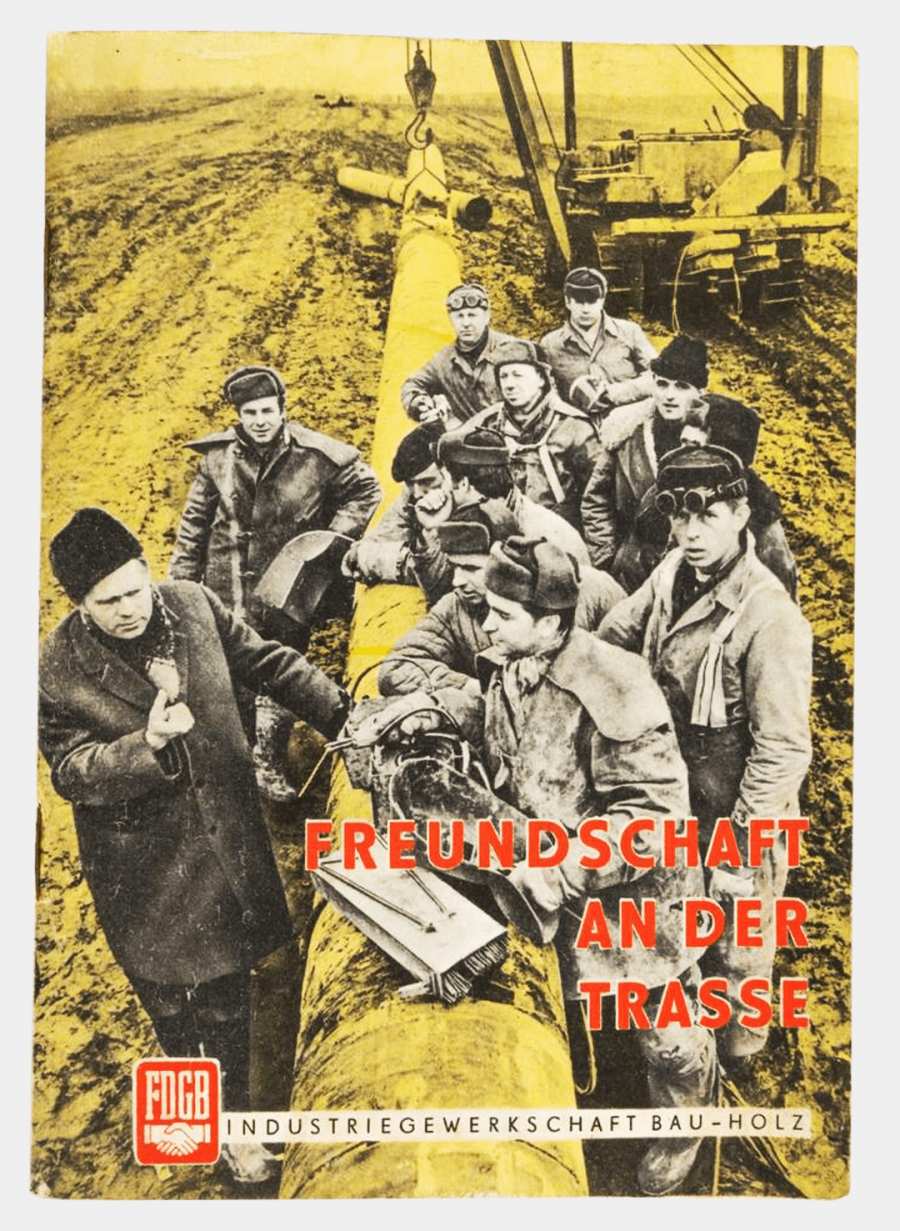
Of course, the Trassniks were also rewarded for their outstanding work. On 5 October 1978, the »Ball of the Trassniks« took place in the Palace of the Republic. In our collection, we have an original invitation to this event, which was organised by the Central Committee of the SED, the Council of Ministers of the GDR, the Central Council of the FDJ and the Federal Executive Committee of the FDGB. The glittering design of the invitation shows that this was certainly an occasion worthy of celebration.
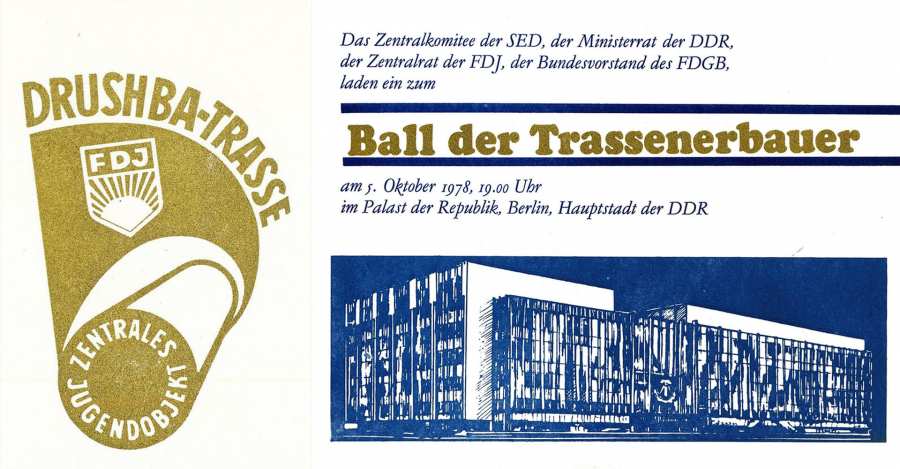
Incidentally, in the second part of our exhibition themed »Brother States«, there is also a short film about the construction of the »Druzhba« route.
Editor's note: This blog post was first published on 8 January 2015.
